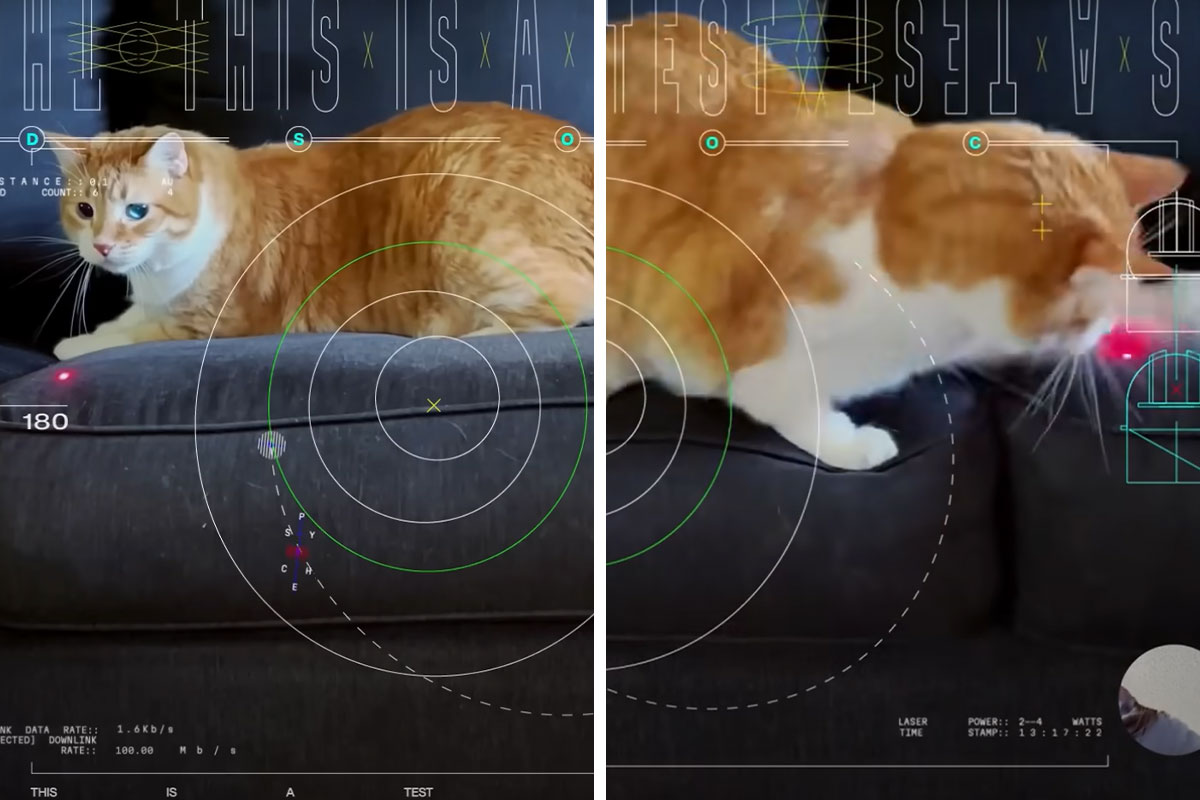
NASA Employee’s Cat Stars In First Clip Transmitted To Earth By Laser 19 Million Miles Away
A cat video was streamed by the US National Aeronautics and Space Administration (NASA) from almost 20 million miles away, or 40 round trip flights to the moon, using laser communication.
NASA engineers gathered at the Jet Propulsion Laboratory (JPL) in Pasadena, California, on December 11, to view a video of one of the lab’s employee’s cats named Taters.
For the first time, the high-definition video was streamed from 18.6 million miles away, or roughly 80 times the distance from the Earth to the moon, the farthest stream ever.
A cat video was streamed by NASA from almost 20 million miles away using laser communication
Image credits: Associated Press
The groundbreaking event was part of NASA’s Deep Space Optical Communications (D.S.O.C) experiment, which aims to better the infrastructure for communication beyond the Earth’s orbit.
The demonstration marked a step closer to being able to communicate with humans who would potentially travel to Mars, as such an exchange would need larger amounts of data to be transmitted over a longer distance.
Dr. Abhijit Biswas, the project technologist, told the New York Times: “This would be like the same capability that you’d want to have if you’re sending an astronaut to the surface of Mars or something like that. You want to have constant contact with them.”
Image credits: JPLraw
Taters’ streaming was made possible with the help of NASA’s Psyche spacecraft, which was reportedly launched on October 13 with SpaceX’s Falcon Heavy rocket from Florida’s Kennedy Space Center to explore an asteroid with the same name.
JPL electronics lead Ryan Rogalin told the BBC: “Despite transmitting from millions of miles away, it was able to send the video faster than most broadband internet connections.”
As per The Times, the D.S.O.C. experiment is using laser communications, as opposed to traditional radio frequencies, in an attempt to transfer large gobs of data at faster rates over greater distances.
The cat, named Taters, belongs to one of NASA’s Jet Propulsion Laboratory employees
Image credits: JPLraw
Image credits: JPLraw
The large gobs of data transmit 267 megabits per second, a transmission comparable to rates on Earth, which are often between 100 and 300 megabits per second.
Nevertheless, Abhijit urged caution about the results of the demonstration as he said: “This is the first step. There’s still significant requirements for ground infrastructure and things like that to take something that’s kind of a proof of concept to transform it into something that’s operational and reliable.”
The 15-second video, which saw Taters chasing a laser pointer, was transmitted using a flight laser transceiver, one of several pieces of new hardware being deployed for the first time, The Times reported.
The demonstration marked a step closer to being able to communicate with humans who would potentially travel to Mars
Image credits: JPLraw
Image credits: JPLraw
This experience is reminiscent of the 1928 television test, where a statue of the cartoon character Felix the Cat was used to test television transmissions, Poynter reported.
The D.S.O.C. system is made up of three parts: the transceiver, which was installed on board the Psyche spacecraft, and two components on Earth: a ground laser transmitter (roughly a 90-minute drive from the laboratory) and a ground laser receiver at the Palomar Observatory in Southern California.
Dr. Meera Srinivasan, the project’s operations lead, told The Times: “It’s a little mind-blowing right there that you’re able to do all that in the end.”
You can watch the demonstration below:
To begin the process for the cat video, the ground transmitter reportedly first sent up the laser beam. NASA’s Psyche spacecraft then locked on to that signal and sent the content, which had been preloaded by the NASA team, back down to the receiver.
For the transmission to work, it needed to be done during a cloud-free night, which would allow a proper line of sight, The Times reported.
At the end of June, the NASA engineers reportedly expect to be able to transmit from a distance that is 10 times as far: 186 million miles.
“All important things start with a cat,” some commentators exclaimed
I spent a minute wondering why they shot a cat into space then I realized it's a video taken on Earth streamed from space
I spent a minute wondering why they shot a cat into space then I realized it's a video taken on Earth streamed from space
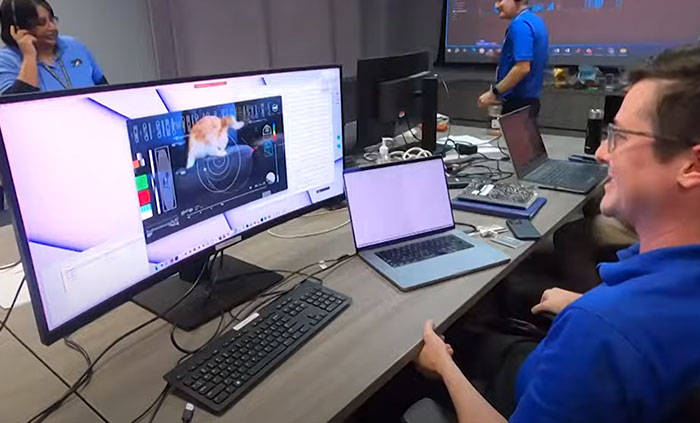
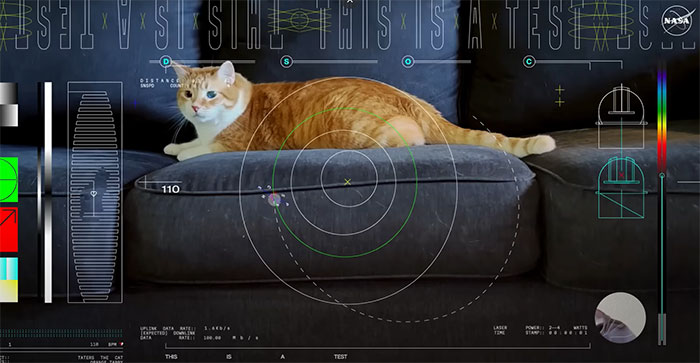
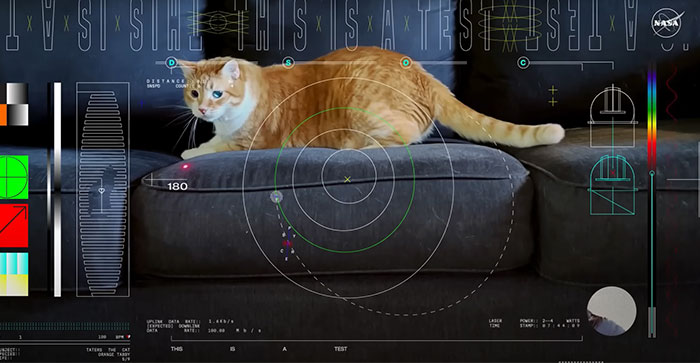
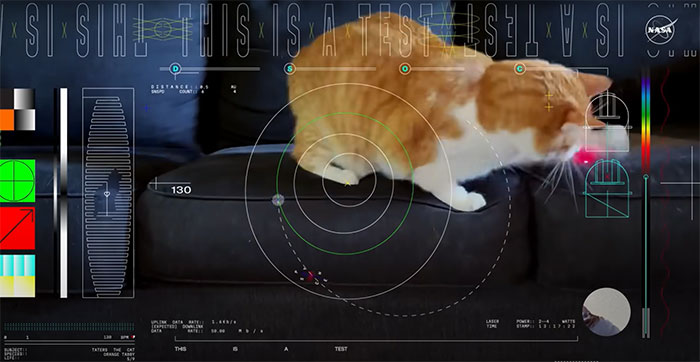
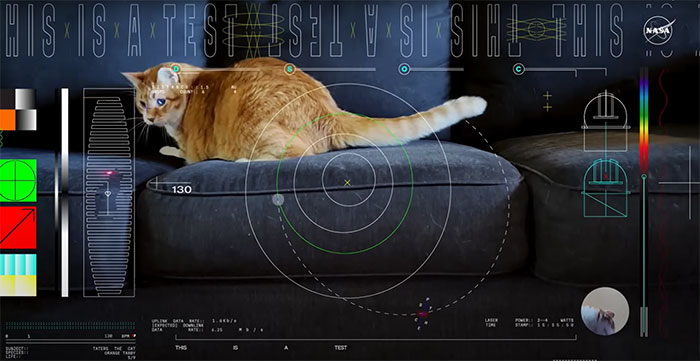
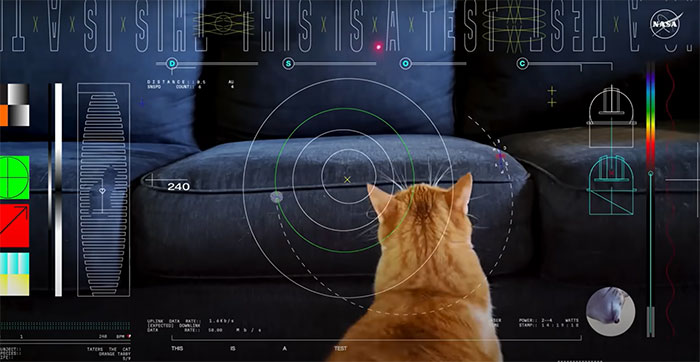






















66
8